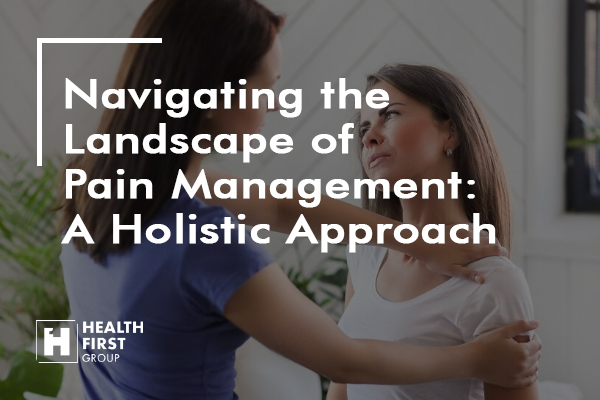
Navigating the Landscape of Pain Management: A Holistic Approach
Author:
Last updated: 2024-06-18
Any human experience will always involve pain in one form or another.. Whether acute or chronic, physical or emotional, managing pain effectively is essential for maintaining a good quality of life. In this blog, we’ll explore the multifaceted world of pain management and delve into holistic approaches that encompass both traditional and alternative methods.
Understanding Pain
The body uses pain as a warning when something is off. It can be a result of injury, illness, or stress, and its impact extends beyond the physical realm, affecting mental and emotional well-being. Effective pain management involves not only alleviating symptoms but also addressing the root causes and improving overall health.
Conventional Approaches
Medications
Traditional pain management often involves the use of medications such as analgesics, anti-inflammatories, and opioids. While these can be effective for short-term relief, long-term use may come with risks and side effects.
Physical Therapy
Targeted exercises and physical therapy play a crucial role in managing pain, especially for musculoskeletal issues. Rehabilitation can strengthen muscles, improve flexibility, and enhance overall function.
Interventional Procedures
In some cases, interventional procedures like injections or nerve blocks may be recommended to target specific sources of pain, providing temporary relief.
Holistic Approaches
Mind-Body Techniques
Practices like mindfulness meditation, yoga, and deep breathing exercises are gaining recognition for their ability to reduce stress, improve mood, and alleviate pain. These techniques not only address the physical aspects of pain but also promote mental well-being.
Acupuncture
Rooted in traditional Chinese medicine, acupuncture involves the insertion of thin needles into specific points on the body. This practice is believed to stimulate the body’s natural healing processes and has shown promising results in managing various types of pain.
Nutrition and Lifestyle Changes
Adopting a healthy lifestyle, including a balanced diet and regular exercise, can contribute to pain management. Certain foods have anti-inflammatory properties, and maintaining a healthy weight reduces the strain on joints and muscles.
Cognitive-Behavioral Therapy (CBT)
Addressing the psychological aspects of pain, CBT helps individuals develop coping mechanisms, change negative thought patterns, and manage stress, contributing to an overall reduction in pain perception.
Conclusion
In conclusion, the collaborative efforts of Health First Group , Physio Bundaberg and Physio Cairns underscore the importance of a holistic approach to pain management. By prioritizing health and well-being through a combination of conventional and alternative methods, individuals can embark on a path that not only alleviates pain but also fosters a resilient and thriving life. Together, Health First Group , Physio Bundaberg and Physio Cairns pave the way for a future where individuals can reclaim control over their health, embracing a life free from the constraints of persistent pain.
Find your nearest clinic
With 18 clinics nationwide and many more on the way, there's bound to be one near you
Discover our locations